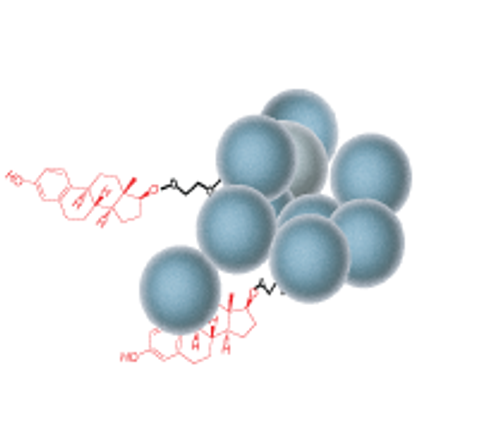Product Description
| Download Documents (Coming Soon) | |
| SDS | USER MANUAL |
CellMosaic® has designed this oligo immobilization kit to work with amine-modified oligos. The user supplies the amine-modified oligos, which are readily available from many commercial oligo suppliers. The kit provides agarose beads derivatized with carboxylic acid functional groups (5-20 μmol COOH per mL of resin). Using the kit components, customers immobilize their amino containing oligo onto SepSphere™ agarose beads in one step following CellMosaic® standard protocol.
Key Features of this Immobilization Kit:
-
Minimum requirement for immobilization set-up
-
All reagents, buffers, and plasticwares are included
-
Modestly activated carboxylic acid agarose
-
One step immobilization with very mild reaction conditions
-
Easy preparation with air push mechanism for washing: less than 1 hr hands-on time
-
Stable linkage
Specification of the Solid Support
- Functional groups: carboxylic acid (COOH)
- Matrix: 4% beaded agarose (source: GE Life Sciences, Sepharose® 4B)
- Particle size: 45-165 um
- Mean bead size: 90 um
- Ligand concentration: 5-20 μmol COOH per mL agarose
Specification of the Immobilized Product
- Immobilization chemistry: immobilized via stable amide bond
- Chemical stability: stable
- pH Stability: stable
Requirement for oligo
- Preferable 5' C6 or 3' C6 amino modified oligo
- HPLC purified and lyophilized
- Total amount: 0.1-2 μmol
- Additional components of acid or other molecules containing primary or secondary amine groups and thiol should NOT be present
- Potential interfering compounds for labeling and conjugation reactions:
- Thiols: e.g., DTT and mercaptoethanol
- Primary and secondary amines: e.g., ammonium acetate, ammonium bicarbonate, ammonium tartrate, ammonium citrate, ammonium phosphate, AMPD [2-amino-2-methyl-1,3 propanediol], aminoguanidine bicarbonate salt, ethanol amine, Gly-gly, Tris buffer, piperidine buffers.
Frequently Asked Questions:
If you can’t find the answer you’re looking for or need information on general topics, please visit the main Frequently Asked Questions (FAQs) section.








